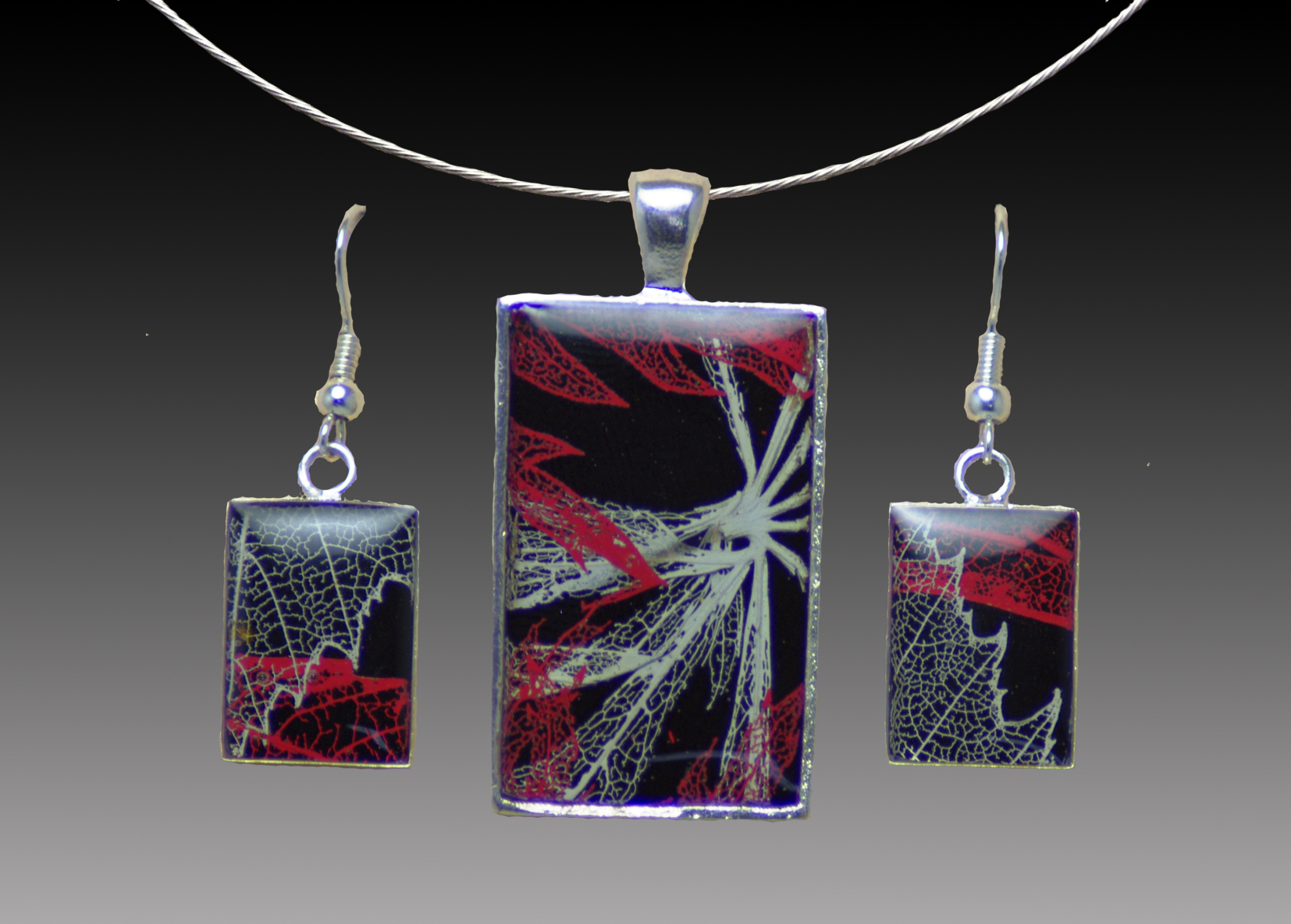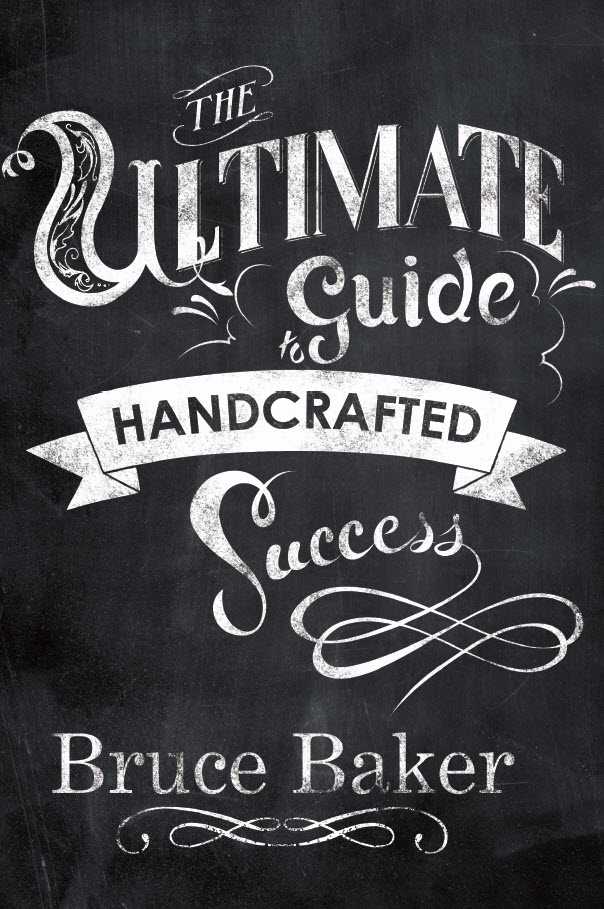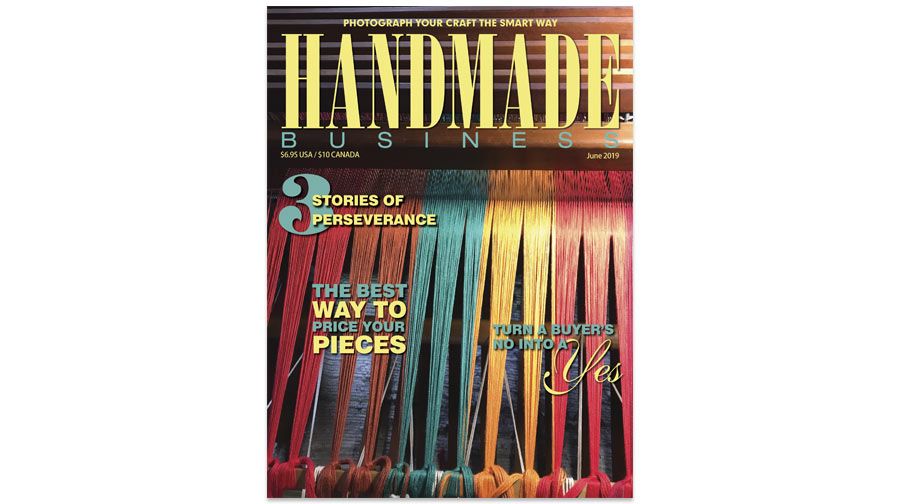By Kelly Rand
“I wish I could do a creative business full time,” Holly Klump recently said to me via Skype. She sounds earnest and a bit wistful. But, throughout our conversation, she makes her reality abundantly clear.
In the 2000’s, Holly ran a part time craft business called Misshawklet, which offered handmade books, journals, and handspun yarn. She tells me it was fun and she learned a lot during the time she made and sold handspun yarn. She considered herself a success. If you were an indie yarn person, you may have heard of her. She did well at craft shows, had repeat customers, and was featured in several craft books. With the extra income she was making she was even able to buy a house.
You must be thinking, what’s the catch? Holly was living the dream craft life. While hand-spinning yarn, she got great exposure from published books, and extra income to boot—enough to buy a house, even! It all sounds too good to be true.
Within the creative community there is a perpetual myth that creating a business from your crafts is an easy and pleasurable thing to do. Not only is this not the case, but it is disingenuous and far from the truth. With the rise of Pinterest and lifestyle blogs, this myth is constantly perpetuated by the carefully staged photos and perfectly framed slices of a well crafted life. These flawless scenes give no hint as to the hard work and constant struggle it is to own and run a business based on selling your craftwork.
What lies beneath the surface of these carefully staged photos are many reasons why you should think twice before embarking on a similar path with the mentality that it is all puppy dogs and rainbows.
There are several reasons why you shouldn’t start a business. There is the risk of failure, the reality of how hard you have to work to make ends meet, and how much time you actually have to spend in the day-to-day running of the business. It isn’t for the faint of heart. And maybe, just maybe, it isn’t for you at all.
In the book Handmade to Sell, Chris Herring of the Maryland Institute College of Art’s graduate admissions office, talks about the creation of the University’s Master of Professional Studies degree in the Business of Art and Design. The program is focused on giving creative-types a leg up in the business world. It offers courses in management, taxes, and business ethics, among others. Herring discussed the need for the program based on research the university conducted showing that most independent businesses fail as fast as they begin. The Small Business Administration is a little more favorable, claiming that about half of all small businesses will fail within five years.
There are many reasons why businesses fail and many ways you can take precautions against these instances—but no business venture is foolproof. It is a scary prospect to let your income and financial future rest on an unproven and untested business. When you go into business you are taking a risk and you have to be ok with that level of risk.
About the same time Holly was starting her craft-based business, Jeffrey Everett also started his own part-time design business. Jeff focused his work on concert posters under the business name, El Jefe Design.
“It was a noose around my neck the entire time,” he tells me via Skype, sounding a bit jaded. As his story unfolded he explained how people wouldn’t understand the pronunciation of his business name, how he would have to justify his pricing, and explain why he should be paid a decent wage.
Jeff found himself having to compete with amateurs willing to do similar work for free. He calls this the
“Cult of the Cool Creative,” where someone wants to be associated with the perceived lifestyle but not actually do the hard work to get paid. “It’s very easy to get wrapped up into wanting to be this cool creative type. But in the end it hurts the people out there on the line doing it professionally,” he explained. This comes from experience, where he would lose out on jobs because band managers would prefer to go with the untested fan offering services for free.
Losing out on customers to others who undercut the market is just one of the many ways it is difficult to make a living professionally from your designs and craftwork. Another is actually making money from the thing. Looking a bit deeper, Holly had never really done the back-of-the-envelope math on her craft-based business—but knew her margins were slim. She knew that If she ever did figure out how much she was making, that her wage would have been atrocious—one she could never live off of, if not for her part-time job.
Similarly, Jeff explained that he eventually had to set an hourly rate for himself, so he knew how much he needed to make per day to hit a salary goal by the end of the year. This is a terrifying prospect if you’re not hitting your goal, and an unfortunate reality for poorly run businesses.
When Holly closed her business in 2009 she realized that in order to make it profitable, she would have had to put in a lot more time and effort than she was willing to give. With the broken economy, the purchase of a new house, and the opportunity of a full time job, Misshawklet ended up on the “con” side of her life list. She chose the stability of a weekly paycheck over the uncertainty of the now oversaturated handspun yarn market.
To have a business, you must have an understanding of the market you are in and the forces for and against you. You are also obligated to your customers to fulfill their orders, and hustle to make sales in order to make ends meet. It also means a lot of administrative time, having to deal with what Jeff calls “clutter.” This is the administrative back and forth with potential customers that can take five to ten emails to nail down the specifics—which at five minutes per email, can add up. While this may not seem like a deterrent, it is another one of the many things you have to deal with as a business owner. All of this takes more time away from being a creative.
Holly concurs, explaining that when she was running Misshawklet, the traditional administrative work was not as burdensome for her. However, it was the amount of marketing that needed to be done to get people to see her work that ended up being taxing. “It took up a lot of my time writing blog posts. This was before Facebook,” she said.
This year, Jeff closed down El Jefe Design and regrouped. Today he runs a graphic design business called Rockets are Red. He has a business partner and is enjoying the change of pace. His business partner now does a lot of the intake for new clients that Jeff used to do. He now has more time to let his mind relax and be creative—but he still has to hustle.
In the end, Holly knew it was time to close her business when it was becoming a chore she didn’t want to do. “It was one more thing I had to take care of. It became a burden,” she said. “Now I enjoy just making things. I enjoy making things for myself. I don’t have to stress about making things.” Holly sounds grateful, as she explains this change.
There is something to be said for keeping your cherished hobby as just a hobby—something you do for stress relief and for fun. When you turn your hobby into a business it can turn into a source of stress. It can be draining and make you worry over whether you can ever claim success.
Jeff still isn’t sure he can call himself a success, even after a decade of being in business. “The chances of succeeding are very small. You really, really have to work your ass off. It is a 24/7 thing. It’s still a struggle,” he said. “Having done [shows like] Crafty Bastards, Artscape, and Comic-Con, I see far more people who will be out of business in a year, than those who are going to succeed.”
Today, Holly has a full time job. But if money wasn’t an issue she would definitely pursue another creative business. “If I had the means, that would be my ideal situation,” she said. But, “That’s what it boils down to, I’m a realist. You need to make a living wage.”
Her last bit of advice is fitting—“Don’t quit your day job, until you’re sure.”







